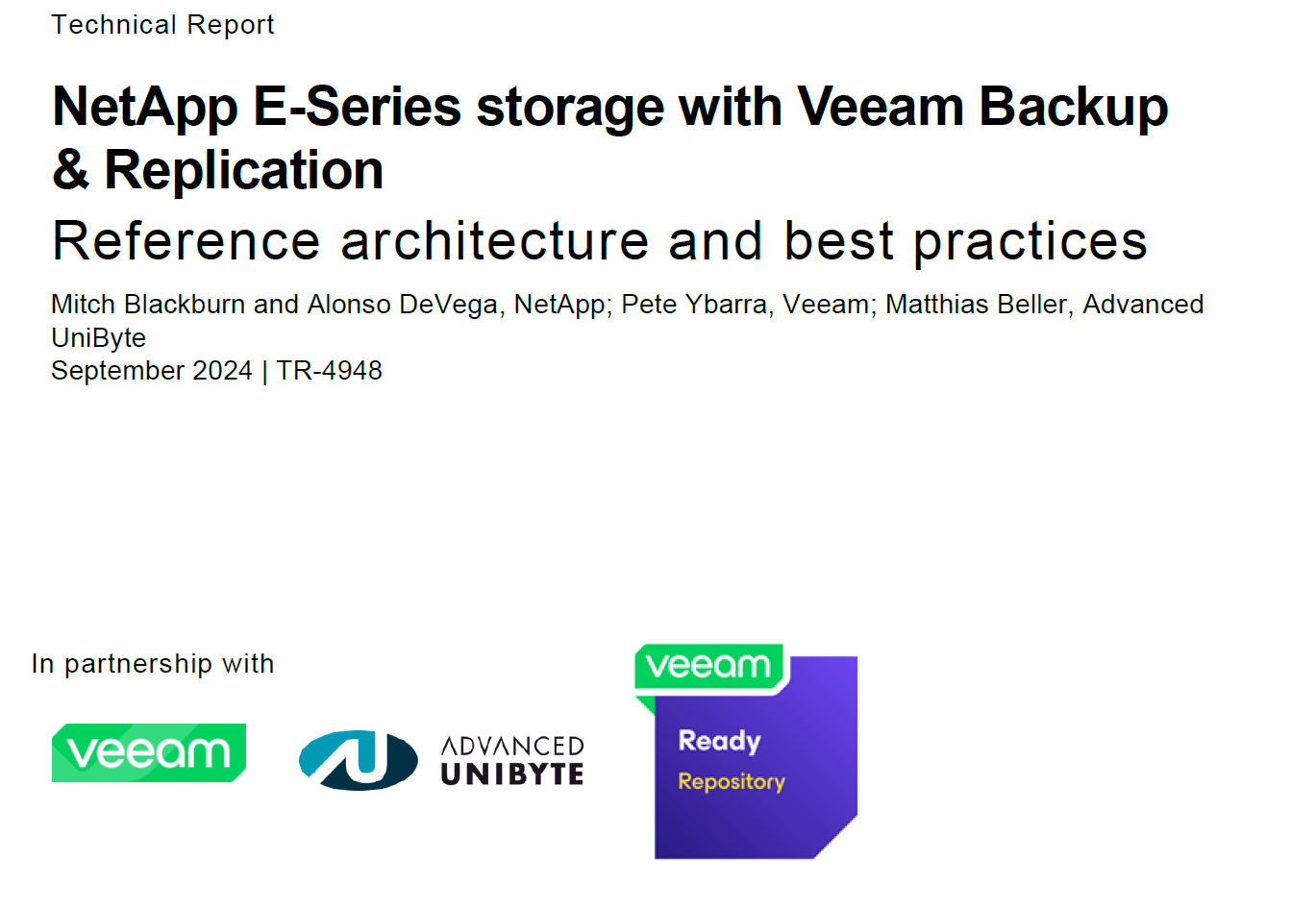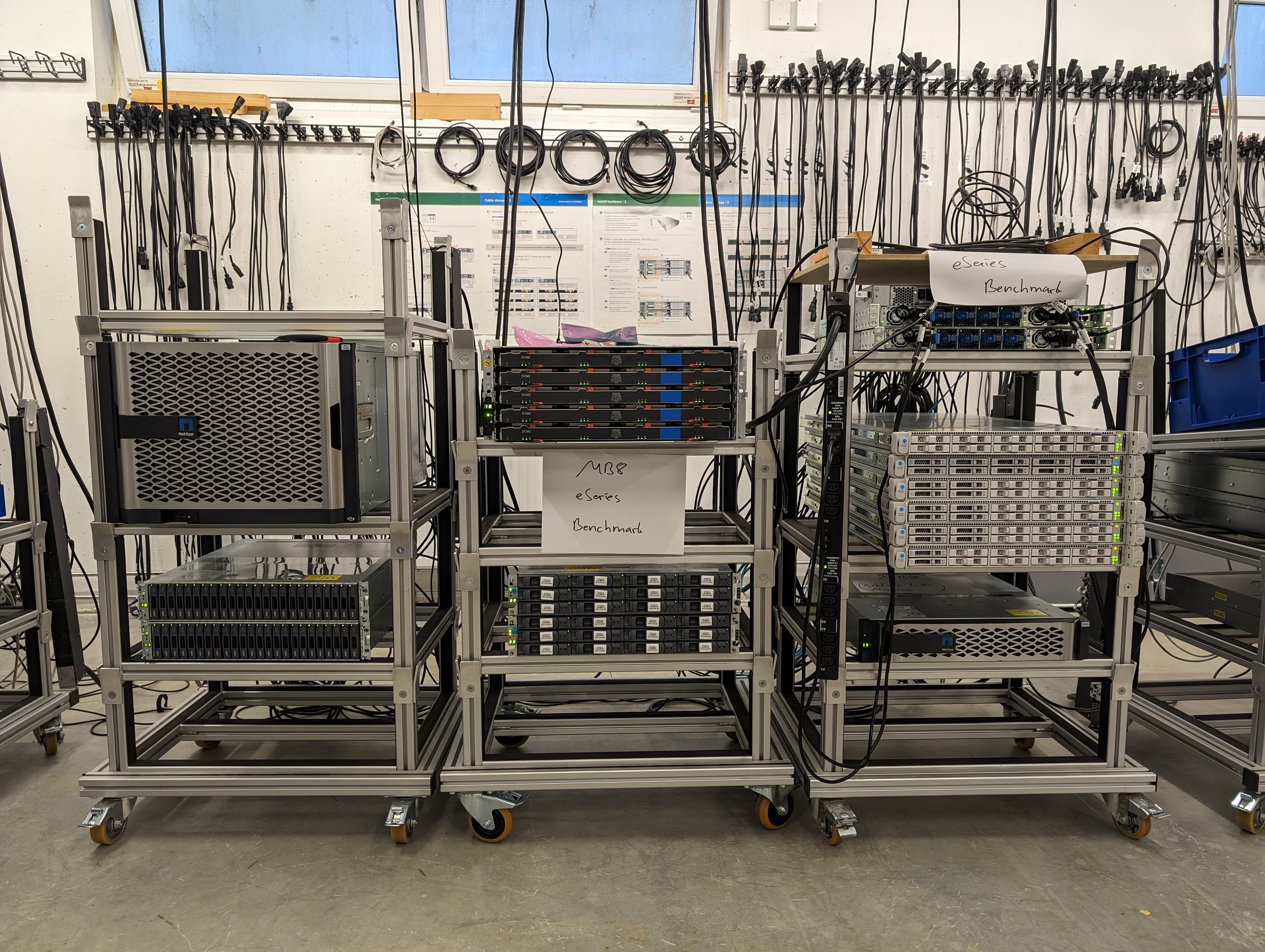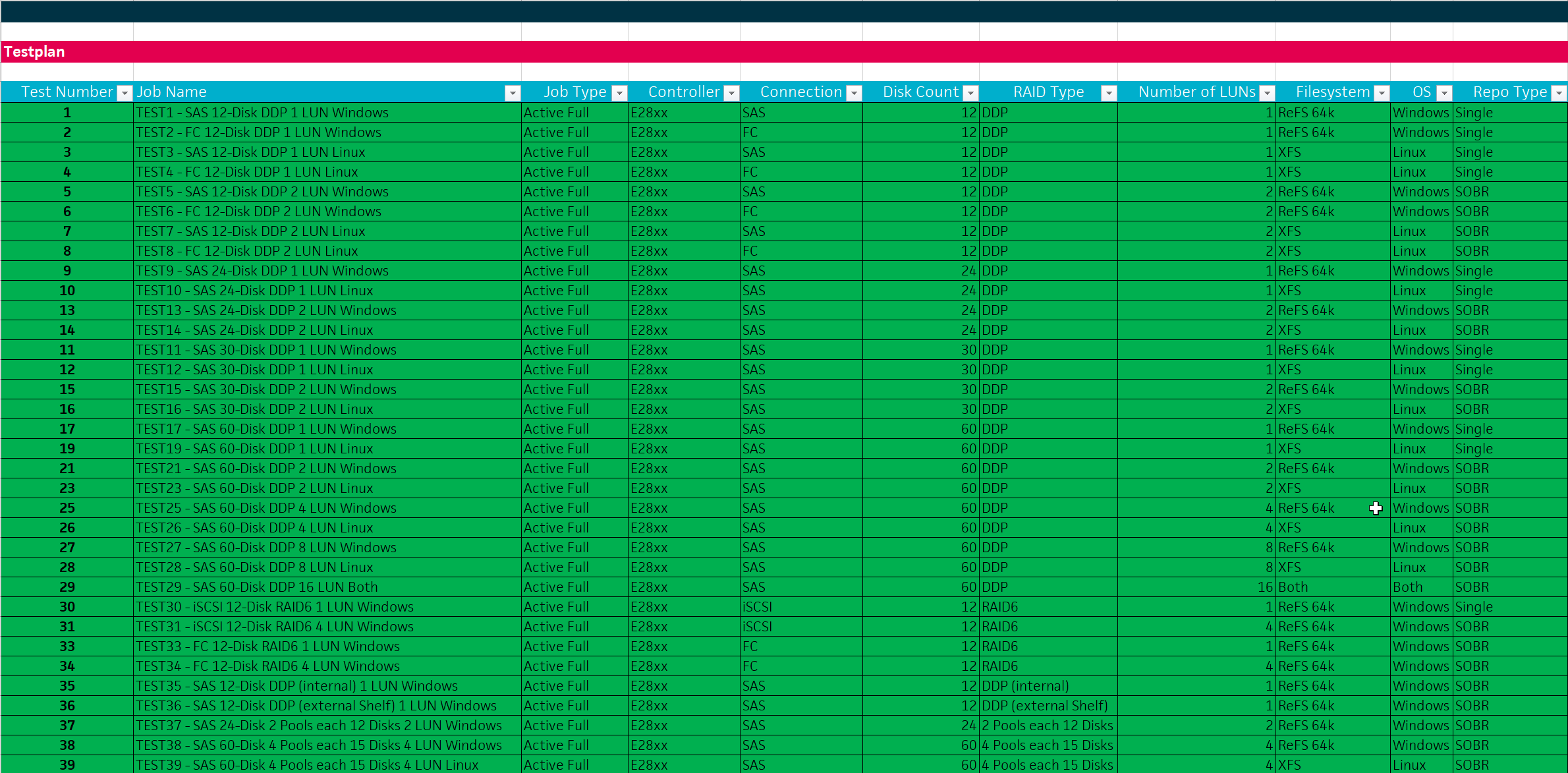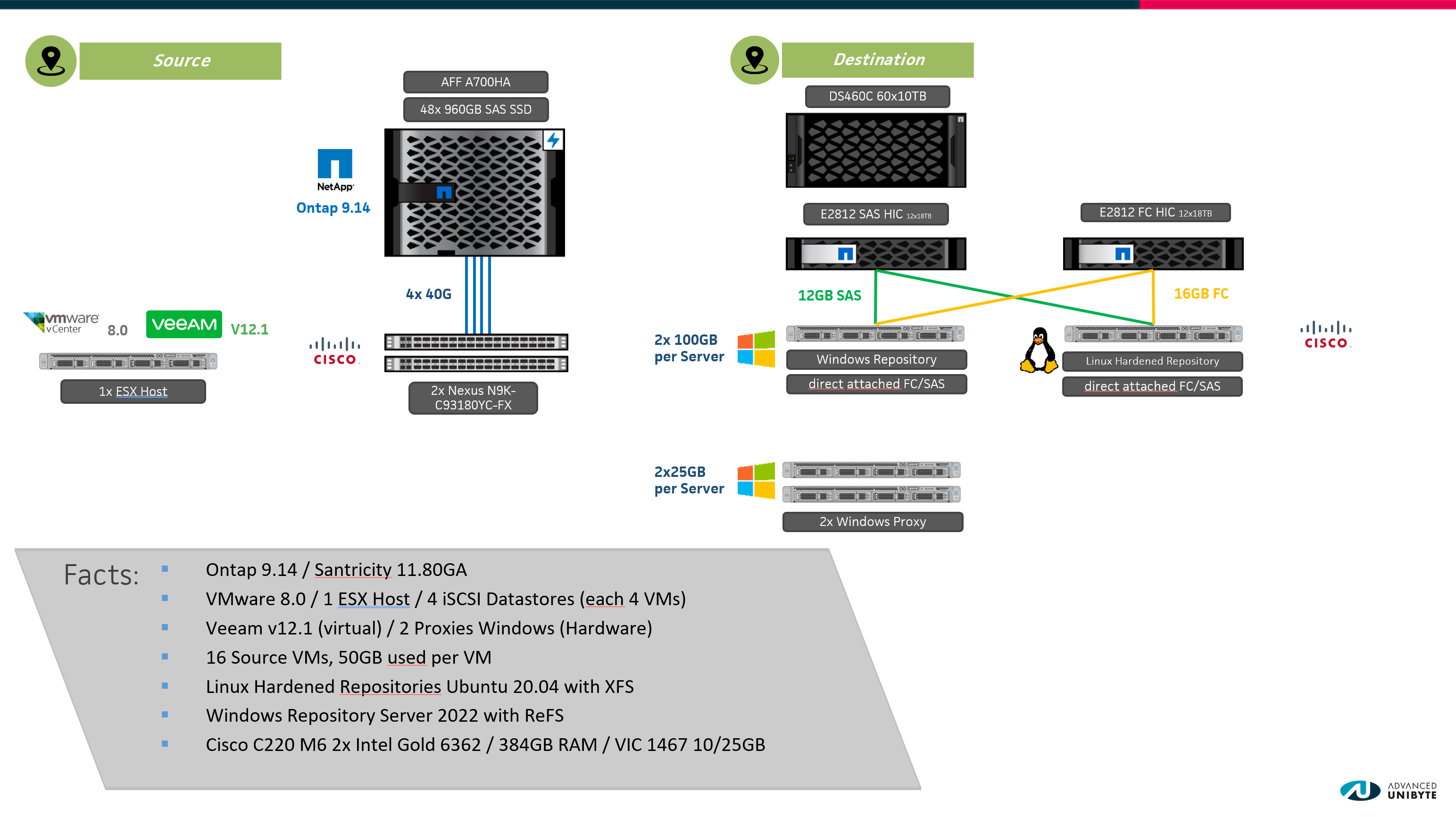The new “Technical Report 4948 NetApp E-Series storage with Veeam Backup & Replication: Reference architecture and best practices” is online!

But let's start from the beginning - how exactly did this happen?
While we often use NetApp Ontap systems for primary storage environments, there are other requirements for backup storage.
What really matters for backups:
- Reliability
- Blockstorage to get immutability through the hardened repository
- Price/performance per TB
For smaller environments, we like to use rack servers with RAID controllers and internal HDDs.
However, as soon as multiple 100 TB are required, the use of rack servers with internal discs is not always optimal, in terms of restore times, RAID expansion, etc.
A very common combination for us is therefore a 1U rack server with a SAS or FC card. The E-Series is connected "Direct Attached" to this, this combination then provides a reliable and high-performance repository.
I always call the E-Series "a better external RAID controller". And this is exactly where my problem started.
So the typical questions came from my colleagues:
- For example, what speed can I expect from 24 HDDs in the system?
- Should I rather use FC or SAS?
- Is ReFS actually as fast as XFS?
Of course, you have a personal preference and a feeling for all these questions, but I couldn't back that up with facts.
So I took a look at the TR-4948 and realised that there were only very basic performance values, which didn't help me further.
So I decided to write to the authors of the actual TR, Mitch Blackburn and Alonso DeVega (NetApp). I told them "if you provide me with hardware for testing, I'll share the benchmark results with you".
It didn't take long for the first call to take place. We quickly agreed on how we want to do this and so the E-Series was sent on its way for testing.
A few weeks later, the test hardware arrived and i build my temporary lab...

Comment on the picture: Most of the hardware was from our own lab, e.g. source storage, servers, switches, etc. Only the E-Series systems were provided by NetApp.
I quickly realised that I need to organise myself a little and created a test plan for the different scenarios to document the results.
What I completely underestimated? TIME! And so the whole thing escalated a bit and I spent a full week in our lab ;)

Here is a picture to give you a good overview of the test setup.

The main changes in the TR are:
- Updated the information to Veeam v12
- Added the chapter "Hardened Linux Repository"
- Added the benchmark results.
Detailed information on the results can be found in the TR:
https://www.netapp.com/media/79436-tr-4948.pdf
I am very pleased to have been given the opportunity to contribute to the document.
A big thank you goes to





